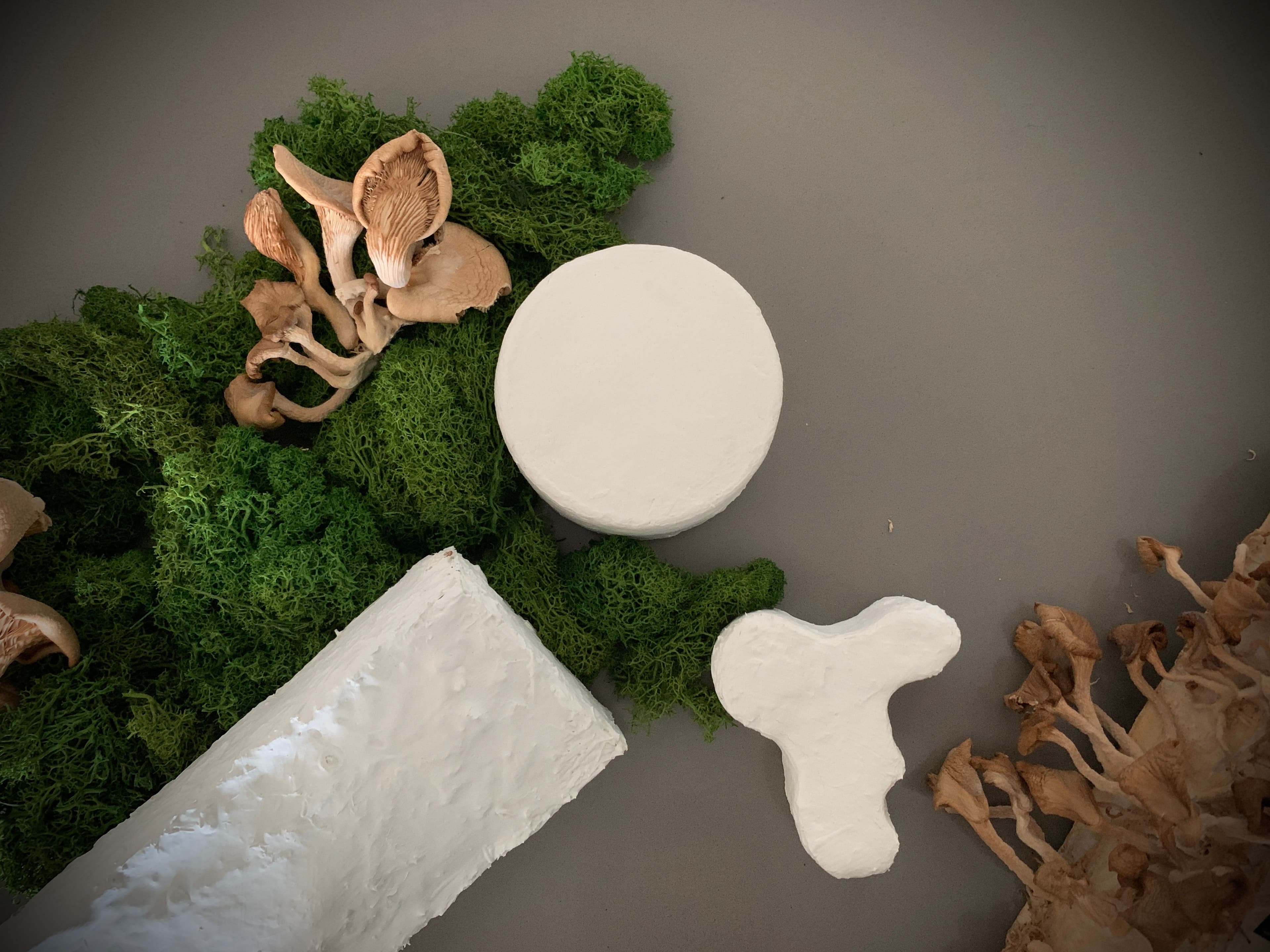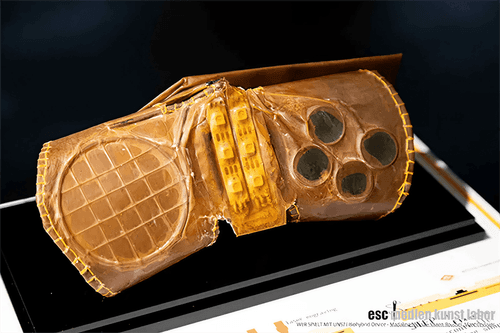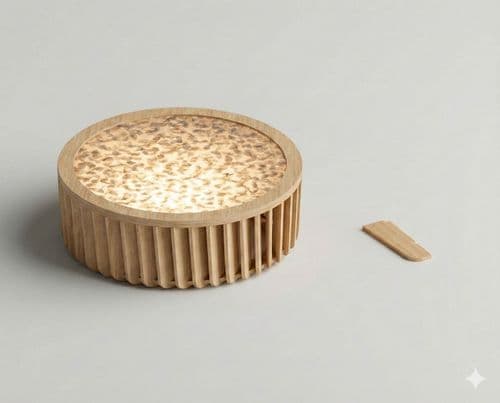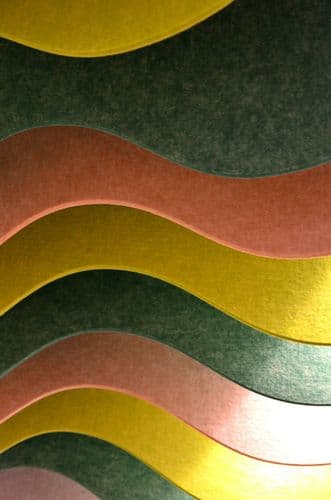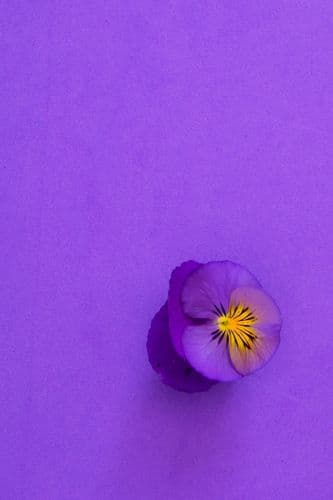Key Points
- Local inputs, local fit: Strain shortlist led by Ganoderma lucidum paired with date-palm biomass; no imported substrates; tuned for high heat and arid conditions.
- Where it works: Optimised for acoustic, thermal and interior panels; consistency achieved via particle size, moisture and inoculation control, not aimed at structural loads.
- Fungi Conservation Centre at Expo City’s Terra supports regional Red List work; site hosts ~100 native plant species, solar canopy, energy trees and subterranean cooling.
- End-of-life & data: Designed to shred/compost with slower desert breakdown; production waste earmarked for soil repair; every batch tracked, with a proposed “myco-MIS” for strain–substrate performance.
Full interview with MycoSphere
1. Fungi + Substrate + Climate: What makes your mycelium-based materials viable for arid climates like the UAE?
At MycoSphere, we work with fungi not as materials, but as partners in regeneration. Among the strains we’ve explored, Ganoderma lucidum stands out for its incredible strength and compatibility with local waste streams, particularly date palm biomass, a lignin-rich byproduct of the desert landscape. We never import substrates, instead relying solely on locally available waste.
After intensive R&D, we fine-tuned formulas that show strong enzymatic activity and a tight hyphal network. We also prioritise strains that colonise efficiently in higher temperatures, suiting the UAE's climate. Our “UAE fit” isn’t just about the fungus, it’s the synergy of fungi, substrate, and climate logic as one system. This is the logic we design for: materials that belong to their place, responding to the rhythm of the local environment.

2. Fungi as Infrastructure: How do you source and evaluate fungal species?
We approach fungi as local infrastructure, not just ingredients. Selection is guided by bioregional relevance and functional traits. We prioritise fungi that are ecologically compatible with arid systems, capable of digesting local biomass and bonding materials without synthetic interventions.
Integration must be non-disruptive, we avoid invasive species or those with unclear ecological impacts. Traits we assess include: lignin/cellulose degradation, growth rate, mycelial mat density, binding capacity, and heat tolerance. The aim is collaboration, not extraction.
3. Architecture as Organism: How does the Fungi Conservation Centre reflect fungal behaviours?
The Centre at Expo City will be the first of its kind in the Middle East, spotlighting fungi native to the region. Housed within Terra, an architectural feat inspired by biomimicry, the Centre will contribute to Red List assessments for underrepresented fungi, closing key biodiversity data gaps. Terra features a solar canopy, rotating energy trees, and a subterranean design that leverages the earth’s insulating power.
With over 100 native plant species, the site fosters a biodiverse microclimate. The architecture mimics nature: dynamic, organic, and evolving. It’s not an exhibition, it’s a living archive.
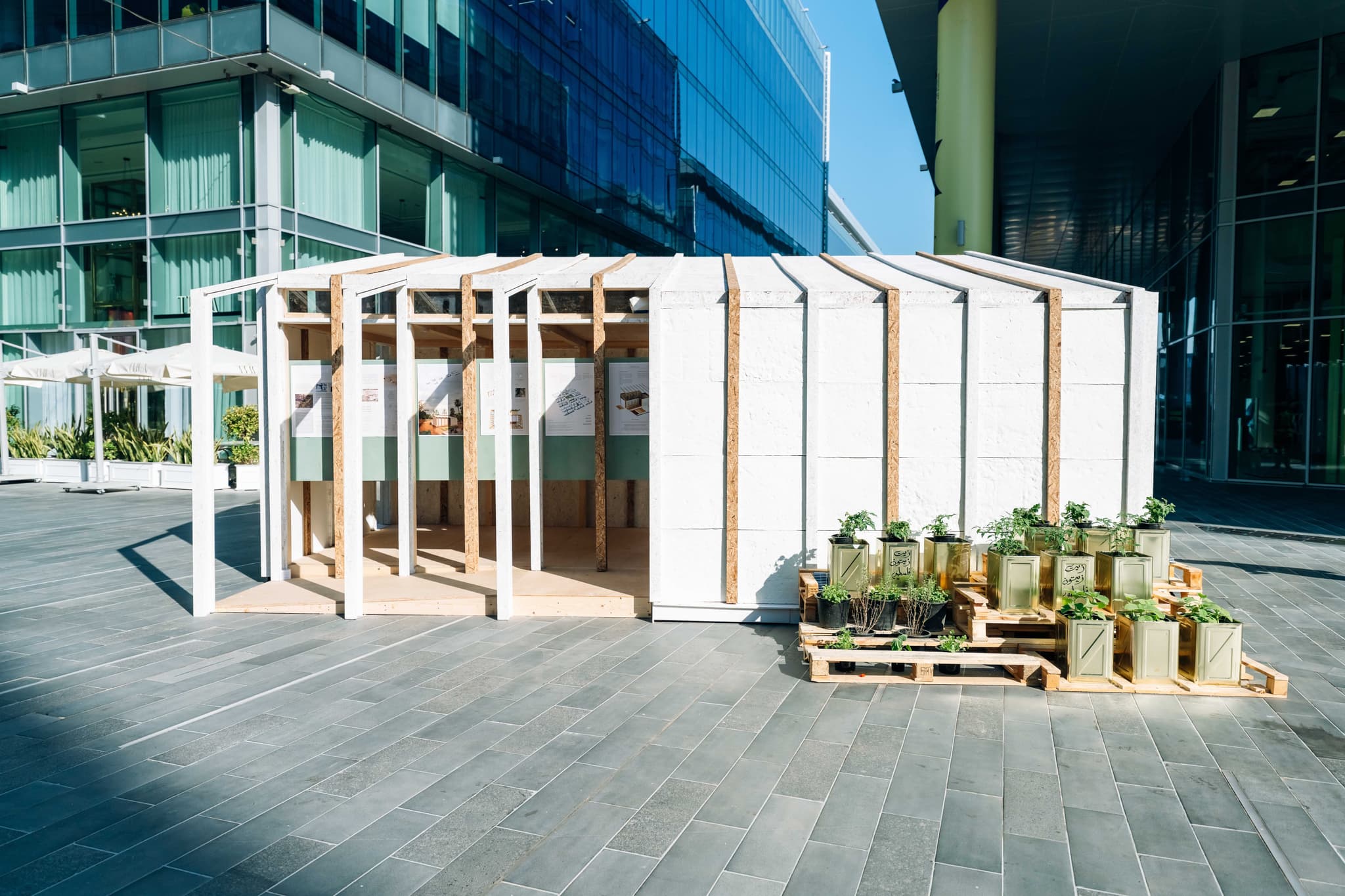
4. Scaling Relationships: What technical constraints emerge when growing mycelium at scale?
Scaling nature is humbling. Fungi remind us that growth is about relationship, not just production. We’ve faced challenges in consistency, climate sensitivity, and mechanical limits, each teaching us better design.
Solutions included refining particle size, moisture distribution, and inoculation methods. Our mycelium composites are best for non-structural uses: acoustic, thermal, and interior systems, sometimes supported by hybrid assemblies with minimal conventional materials. The outcome is a slower, bio-intelligent manufacturing process that listens instead of commands.
5. Resilience over Resistance: How do you validate performance like water, strength, or fire safety?
We trust nature’s engineering, enhanced by lab testing, prototyping, and real-world benchmarks. Mycelium chars instead of burning, which is promising for fire safety. For water resistance, we apply bio-based surface treatments suited to UAE conditions.
Crucially, we test for re-testability, consistent behaviour over repeated cycles. Our goal isn’t materials that last forever, but those that age gracefully. Where industry sees resistance, we see resilience.

6. Biodegradation by Design: How do your materials decompose in desert environments?
Degradation in deserts is slower due to UV exposure, low microbial activity, and arid conditions. But slower isn’t worse; it’s a form of ecological fit. We test not just for breakdown but for how materials return value: carbon, minerals, and microbial life.
We design for reversibility, panels that can be shredded or composted in the right conditions. For us, circularity means credible end-of-life scenarios, not the myth that it all “just goes back to nature.”
7. Lessons from the Sand: How does Dominikia emiratia shape future bio-material innovation?
Dominikia emiratia, a mycorrhizal fungus discovered in Abu Dhabi’s sands, survives heat, drought, and nutrient-poor soils by forming symbiotic relationships with plants. While we don’t yet apply this species, its existence teaches us that fungi already know how to thrive in extreme environments.
It’s a signal: the next breakthroughs may come not from the lab, but from soil wisdom, already encoded in nature.
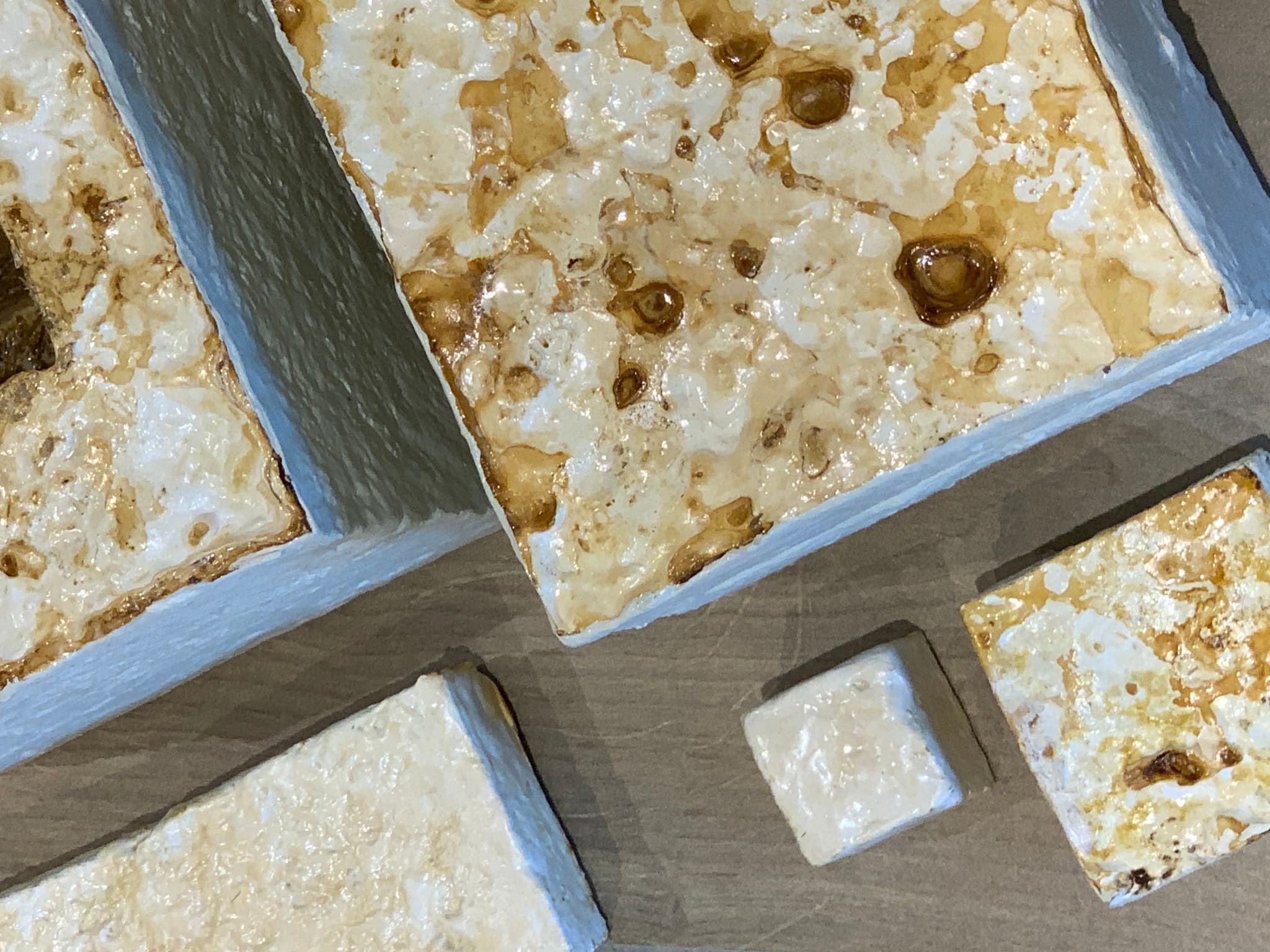
8. Myths We Bust: What misconceptions do designers have about fungal materials?
Myth one: “Will it keep growing?” No, it won’t.
Myth two: “Is it fragile?” No, mycelium is adaptive. It’s not concrete, but for acoustic panels and cladding, it performs on weight, performance, and story.
Fungi bring precision, aesthetics, tactility, and circularity that petrochemical foams lack. Once designers stop controlling fungi and start collaborating, biodesign becomes new nature.
9. Fungi as Ecosystem Teachers: How can fungal systems support both materials and soil health?
We envision a future where mycelium materials double as soil healers. Waste from production can become ecosystem repair kits, stabilising sand, enriching microbial diversity, and enhancing fertility.
Fungi become the bridge between architecture and agriculture, part of a longer ecological loop, not a one-time material phase.
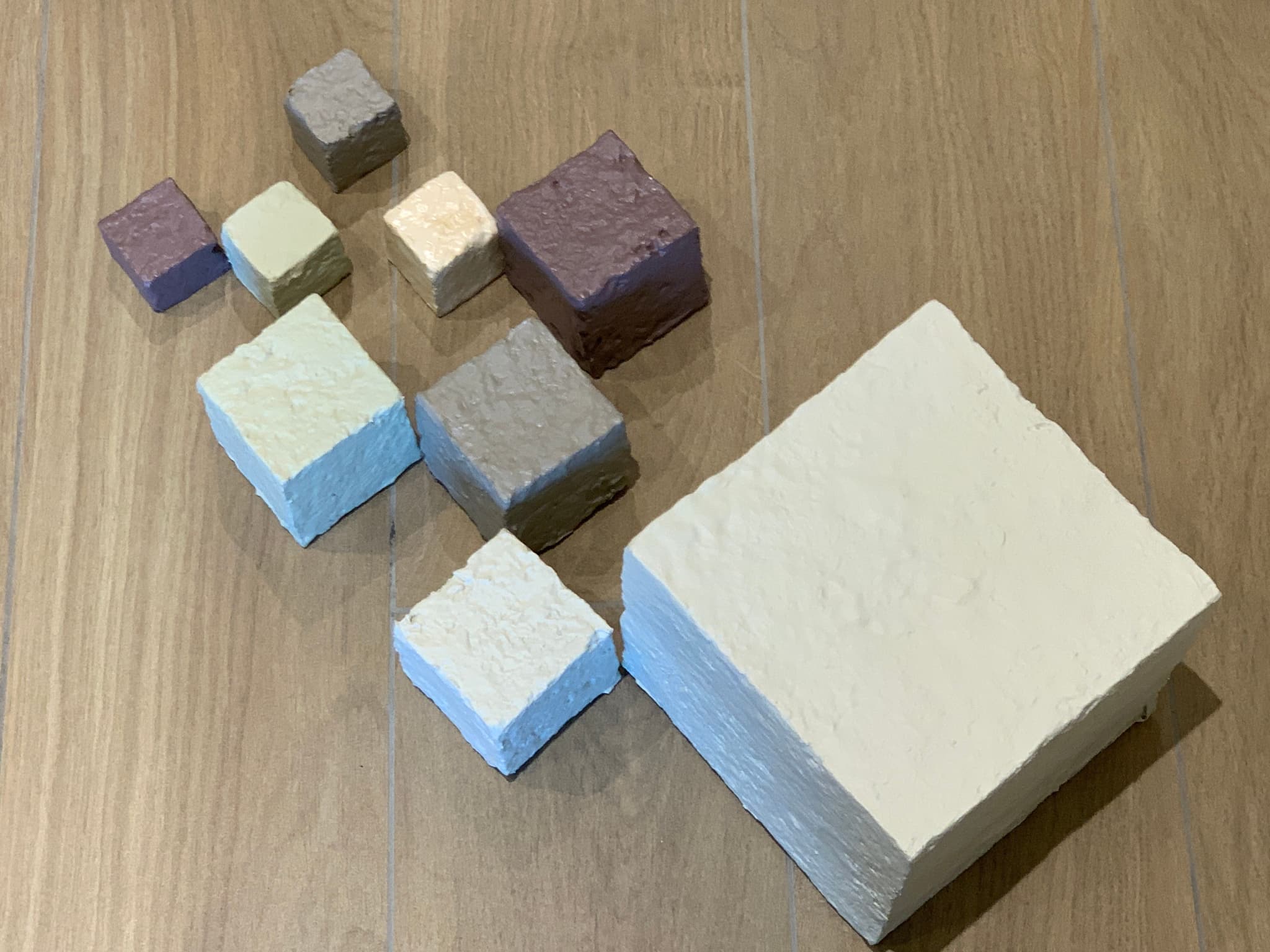
10. Myco-MIS: What role does data and AI play in your fungal material pipeline?
Data is memory. Every material batch has a traceable lineage, from spore to structure. This helps us prove impact, improve methods, and build trust.
AI could accelerate that. We imagine a “myco-MIS”, a system that classifies strains by ecological fit, tracks performance, and suggests symbiotic pairings. Picture an intelligent fungal database that learns, evolves, and teaches back.

11. Looking ahead, what material capabilities or performance milestones would you like your fungi-derived products to achieve in order to shift perception from niche biodesign to mainstream industry relevance?
The next frontier isn’t technical. It’s psychological.
We want fungi-based materials to move from beautiful curiosities to everyday infrastructure. That means meeting industrial standards while keeping their ecological soul intact. We want mycelium materials recognised in building codes and product standards, with clear performance classes, competing directly with conventional foams, MDF, and plastics. The milestone is when fungi-based materials feel like a default smart choice, not a brave one.
Our ultimate goal is a future where builders, designers, and citizens no longer ask, “Why fungi?” but rather, “Why not?” A world where the built environment finally behaves like the living one - adaptive and regenerative.
